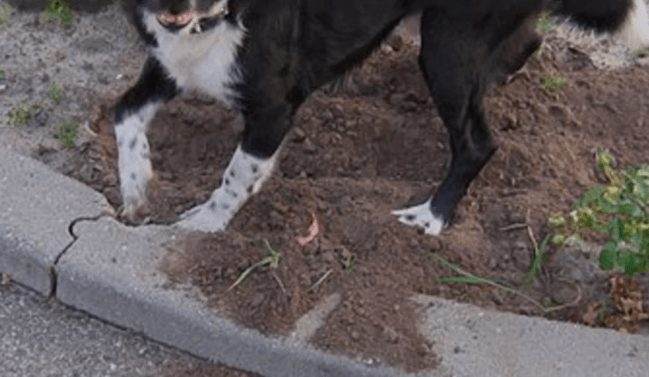Labrador owners know how bad Hip dysplasia can be. It can easily take over a dog and make him look lazy whereas actually he is weak to walk due to this disease.
The million-dollar question which is so confusing and unclear is when Labrador puppies can climb stairs? It’s a known fact that as puppies age, their legs are strong enough to climb stairs (slowly and steadily). The one-line answer is around 5 months. Also, note that allowing your Labrador retriever puppy to climb stairs up and down is not going to hurt him and cause him any disease as such. However, caution has to be taken if your puppy already has the disease and then he running on stairs too often and too fast. In that case, you should not allow him to climb stairs.
From my personal experience with a dog named Casper who was 5 years old, I can say it’s really not fair for the dog. The pain was unbearable as well as tough for anyone watching that dog struggle to walk. Finally, he was put down as per laws and after completing all formalities.
There is a strong belief between climbing stairs and getting hip dysplasia. A lot of people I meet know about it but they are not 100% sure. So, in this article, I will go over the details of hip dysplasia and more importantly various aspects of climbing stairs for your puppy.
I have contacted so many vets, dog trainers, and experts before making the above statement. I have also researched a lot about this topic on the internet before giving the above advice.
If your puppy is healthy and shows no signs of weakness and has passed all examinations by the vet then there is not a single reason to disallow puppy to climb stairs. He will not attract hip dysplasia by doing so.
Please understand that hip dysplasia doesn’t come from climbing stairs but if it is already there then climbing stairs is not recommended.
At What Age Can Labrador Puppy Climb Stairs
You cannot allow the Lab puppy to go to the stairs when he is just a kid. There has to be a specific age when you want to allow it. Allowing it too soon can create problems of various types like accidents.
This is the same as we handle our babies when they are starting to learn to walk. Just follow the same analogy and you should be ok.
With age, the puppy’s feet size will increase and then he can properly place them on stairs and will also that grip to balance himself while climbing up.
A point to note here is that every lab puppy is going to grow differently with age and it depends on so many other factors like diet and puppy training sessions.
Compare the stairs in your home to his feet size
- You can easily judge by looking at the width and height of stairs and the puppy’s feet size. Can he pull up his legs to the height of each staircase? Is the width of the staircase enough for him to place all his four paws? You have to think from a puppy’s point of view. On a lighter note, you have to become a puppy.
The stairs you and everyone in your home can climb easily can look an uphill task for the Labrador puppy.
- Another important point worth considering here when answering this question about allowing him or not is how active the puppy is? If he too active and energetic then he will hurry and hurt himself. Initially, the Lab puppy needs to go slow about it
If the puppy is showing too much energy and excitement about everything, then it is better to let him grow up and when he has started following what you say then you can allow him his quest slowly.
Stairs Don’t Cause Hip Dysplasia
Since this is one of the most critical concerns for puppy owners, I have got a vet’s response to my readers here:
“Hip dysplasia is not a viral or lifestyle disease. Its caused due to generic reasons. Moving too much and playing for long hours will increase it by the day. However, if the dog stops all physical activity then the disease will not reduce its effect on a dog’s body.”
What I would always recommend is to educate yourself about hip dysplasia itself and stop believing in just one statement that you heard from a neighbor or read on social media.
I have read so many posts on Facebook groups related to Labrador and Golden retriever dogs which make this false statement of attracting the disease because of climbing stairs.
I wanted to explore to depth and didn’t want to rely on only a few responses.
So, in order to further validate this, I asked the question on online forums dedicated to retrievers (both Labrador and Golden). The response is the same as I described above. All kinds of people with different experience levels replied to my questionnaire. So, I can say with confidence that you can trust what has been told in this article.
I will share various responses that I heard:
- The Lab puppy can climb stairs depending upon his energy level.
- If you think he will be fine, you can give it a try under your supervision and then think about whether to continue or not.
- The age should be a minimum of 4 months old and there is no such danger of getting hip dysplasia disease by just climbing up.
- You should be more worried about him slipping down or falling down than anything else.
- For any kind of activity, the very first need is proper puppy training. This also is no exception.
So, while statements like “I stopped my retriever from using stairs and he is all fine, no hip problems at all”. We cannot conclude anything for sure from the above sentence.
What I would say in this case is that it is more of a natural phenomenon regarding hip structure than using stairs.
My final verdict for all dog owners and readers of this website is that “do not worry too much”.
The use of stairs by a puppy is not going to harm him as such unless he is unable to balance himself. If the puppy already has it, then only hip dysplasia is going to get worse.

What Can Actually Go Wrong When Labrador Puppy is Climbing?
So, we can keep the concern about hip dysplasia aside and focus on any other issue that can occur when a puppy is using stairs.
As with babies, the puppies also learn by falling and getting up so getting hurt again and again is the cause of concern. You don’t want him to hurt himself dangerously so supervision is important.
You can see a ton of videos on YouTube where the puppy is running at full speed because he is so excited. When it’s time to apply breaks, the puppy won’t be able to control himself and would strike himself into some wall or furniture.
The above also applies to stairs. But the amount of risk is greater here due to the height of the stairs.
For this reason, you want to let the puppy grow up, walk properly on its own, control his feet and still have him climb up under supervision.
How to Introduce Labrador to Climbing Stairs
While he is learning, you will want to have full control over him. You want him to listen to you for the next command and proceed accordingly. For this reason, I always recommend using a leash for this type of training. Let my heel on the first stair before taking the first stair-case.
First, he needs to learn how to sit on the staircase and not fall off. Climbing is easy as he can do so in excitement to reach to the top. The initial motive should be to introduce him to the stairs so much that he knows everything about the stairs.
When you climb the stairs, you never think about the height/width, etc because you are so used to the stairs. The same has to be done with the Lab puppy’s introduction with the stairs.
If your commands go well with the puppy then he will wait for you and will listen to you. He has to learn to be patient. I myself have seen so many videos on YouTube where the puppies will wait for the signal to eat/walk/jump/play from their parent and they look so good.
With patience, he will learn to control himself and go slow with the stairs during his initial climbs. The more control he has over his speed, the better it is.
Treats are a good way to have him use stairs in the way you want him to. You can make him wait as much time as you want by using the treats and leash. Just place some treats on the stair-cases and he will automatically start to follow your command just like any other training session.
I also recommend to use a clicker in this training so that the commands are fully understood to him.
Just keep repeating the training sessions and soon he will good to go on his own. The height is the most crucial for him to not get scared of it so you can spend more time with him at the top of stairs to get him accustomed to the height of stairs in your home.

Don’ts About Your Labrador Puppy Climbing
The points I mention below should help you out in your puppy’s best interest. Do go through these points and you would not be disappointed.
- You may be tempted to allow him to roam freely at a younger age of 4-5 months because he is able to walk but stairs are a different story altogether. So, let him get mature and learn more about the world around himself.
- Joint pain is more of an issue than hip dysplasia. For healthy life in the future, he should not too much pressure on those joints when they are delicate in his early life.
- It is not just about the stairs, but jumping from other heights like Truck, Bed or Kitchen Shelf also poses similar issues.
- While most people will give a go-ahead at 4-5 months of age, it would be great if you can hold jumping and climbing activities until a year.
- There are so many other things that can be taught to your puppy and these include crate training, manners, not biting you, not barking. I think those need more attention in his early life.
Conclusion
The scientific studies published on the internet may tell you that as in the puppy’s early life, the joints and bones are not that strong, it can result in hip dysplasia. But keep in mind that getting hip dysplasia from climbing and increasing the problem further are two different things. I have discussed it so many times above in the article.
All these studies are not final and they themselves will state the possibilities in terms of the relation between climbing/jumping and dysplasia than giving a fool-proof verdict.
References
- https://www.ncbi.nlm.nih.gov/pmc/articles/PMC1687051/
- https://avmajournals.avma.org/doi/abs/10.2460/ajvr.73.6.838
Table of Contents



